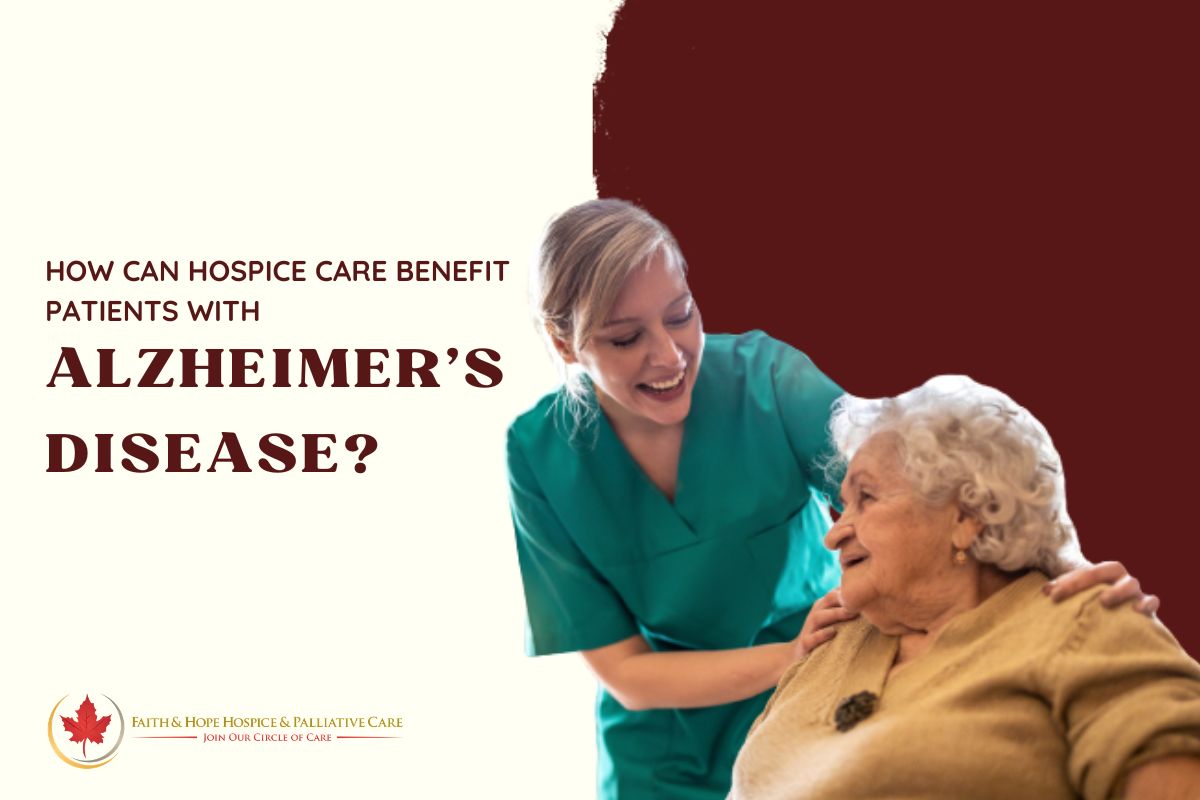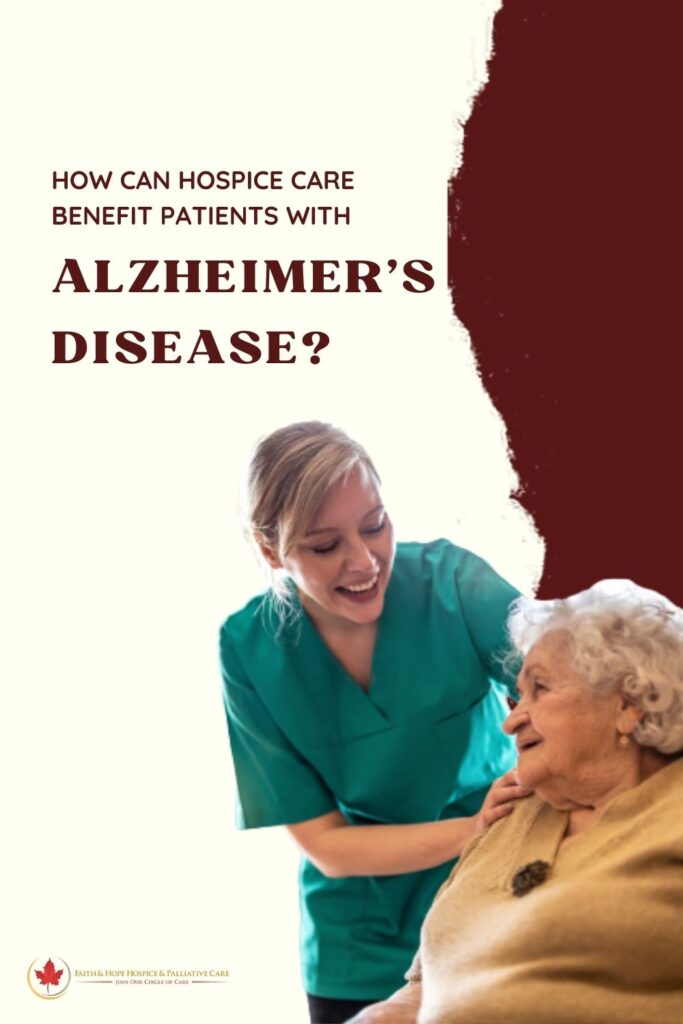
When a member of your family has been diagnosed with Alzheimer’s Disease, the most common type of dementia, it can raise much confusion and a multitude of questions for everybody involved. You may feel unsure of what the necessary steps to take are. Because the condition is permanent and always eventually fatal, being the 7th leading cause of death in the United States alone, you may have considered placing your family member in palliative care in Los Angeles. According to Hopkins Medicine, Alzheimer’s typically affects people over the age of 65 and will live for an average of 8 years after their diagnosis. When making these predominant decisions on behalf of your older relative, it is important to understand that not all people with Alzheimer’s will have the same timeline. Some may pass away shortly after their diagnosis while others may not for decades.

Your relative’s primary doctor or neurologist may recommend hospice if they struggle with performing daily tasks on their own, including swallowing food, dressing, and bathing themselves, and are showing signs of impending death within the proceeding months. If you have discussed your options with the doctor and they feel that Los Angeles hospice care is the best option for him and her, here are several ways in which patients with Alzheimer’s can benefit from our services:
We offer a wide variety of medical supplies so that all of our patients feel safe and right at home in our Los Angeles hospice care. From walkers to wheelchairs, face masks, and hand sanitizers, we aim to give your family member only the best care, because that is exactly what they deserve!
While Alzheimer’s is not a painful disease on its own, many older people may suffer from other conditions that may cause them physical discomfort. We understand how to better manage their pain, whether it be through physical therapy programs or through prescribed medication. We work directly with our patients’ personal doctors so that we understand what they need in hospice to the fullest extent.
Every patient with the same diagnosis is not the same. Some people with Alzheimer’s may enjoy pet therapy more than music therapy or vice versa. Whatever the case, our Los Angeles hospice team will work with your relative so that they feel the best they can be during the final stage of their life.
It goes without saying that making one’s end of life as comfortable as possible as death comes closer. Our professional staff is highly trained to assist patients with Alzheimer’s disease to ensure that this happens.
Allow your loved one to have the highest quality end-of-life care available in the region. There are multiple ways you can contact our staff at Faith and Hope Hospice today. You may:
You are showing the greatest form of love for your family member by choosing Los Angeles palliative care. We are committed to serving him or her with the most excellent care we can provide.
Faith and Hope Hospice
We firmly believe that the internet should be available and accessible to anyone, and are committed to providing a website that is accessible to the widest possible audience, regardless of circumstance and ability.
To fulfill this, we aim to adhere as strictly as possible to the World Wide Web Consortium’s (W3C) Web Content Accessibility Guidelines 2.1 (WCAG 2.1) at the AA level. These guidelines explain how to make web content accessible to people with a wide array of disabilities. Complying with those guidelines helps us ensure that the website is accessible to all people: blind people, people with motor impairments, visual impairment, cognitive disabilities, and more.
This website utilizes various technologies that are meant to make it as accessible as possible at all times. We utilize an accessibility interface that allows persons with specific disabilities to adjust the website’s UI (user interface) and design it to their personal needs.
Additionally, the website utilizes an AI-based application that runs in the background and optimizes its accessibility level constantly. This application remediates the website’s HTML, adapts Its functionality and behavior for screen-readers used by the blind users, and for keyboard functions used by individuals with motor impairments.
If you’ve found a malfunction or have ideas for improvement, we’ll be happy to hear from you. You can reach out to the website’s operators by using the following email
Our website implements the ARIA attributes (Accessible Rich Internet Applications) technique, alongside various different behavioral changes, to ensure blind users visiting with screen-readers are able to read, comprehend, and enjoy the website’s functions. As soon as a user with a screen-reader enters your site, they immediately receive a prompt to enter the Screen-Reader Profile so they can browse and operate your site effectively. Here’s how our website covers some of the most important screen-reader requirements, alongside console screenshots of code examples:
Screen-reader optimization: we run a background process that learns the website’s components from top to bottom, to ensure ongoing compliance even when updating the website. In this process, we provide screen-readers with meaningful data using the ARIA set of attributes. For example, we provide accurate form labels; descriptions for actionable icons (social media icons, search icons, cart icons, etc.); validation guidance for form inputs; element roles such as buttons, menus, modal dialogues (popups), and others. Additionally, the background process scans all the website’s images and provides an accurate and meaningful image-object-recognition-based description as an ALT (alternate text) tag for images that are not described. It will also extract texts that are embedded within the image, using an OCR (optical character recognition) technology. To turn on screen-reader adjustments at any time, users need only to press the Alt+1 keyboard combination. Screen-reader users also get automatic announcements to turn the Screen-reader mode on as soon as they enter the website.
These adjustments are compatible with all popular screen readers, including JAWS and NVDA.
Keyboard navigation optimization: The background process also adjusts the website’s HTML, and adds various behaviors using JavaScript code to make the website operable by the keyboard. This includes the ability to navigate the website using the Tab and Shift+Tab keys, operate dropdowns with the arrow keys, close them with Esc, trigger buttons and links using the Enter key, navigate between radio and checkbox elements using the arrow keys, and fill them in with the Spacebar or Enter key.Additionally, keyboard users will find quick-navigation and content-skip menus, available at any time by clicking Alt+1, or as the first elements of the site while navigating with the keyboard. The background process also handles triggered popups by moving the keyboard focus towards them as soon as they appear, and not allow the focus drift outside it.
Users can also use shortcuts such as “M” (menus), “H” (headings), “F” (forms), “B” (buttons), and “G” (graphics) to jump to specific elements.
We aim to support the widest array of browsers and assistive technologies as possible, so our users can choose the best fitting tools for them, with as few limitations as possible. Therefore, we have worked very hard to be able to support all major systems that comprise over 95% of the user market share including Google Chrome, Mozilla Firefox, Apple Safari, Opera and Microsoft Edge, JAWS and NVDA (screen readers).
Despite our very best efforts to allow anybody to adjust the website to their needs. There may still be pages or sections that are not fully accessible, are in the process of becoming accessible, or are lacking an adequate technological solution to make them accessible. Still, we are continually improving our accessibility, adding, updating and improving its options and features, and developing and adopting new technologies. All this is meant to reach the optimal level of accessibility, following technological advancements. For any assistance, please reach out to
